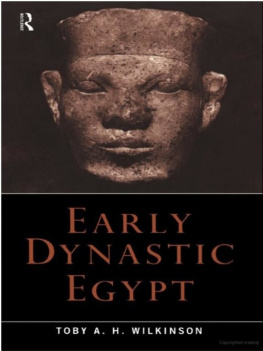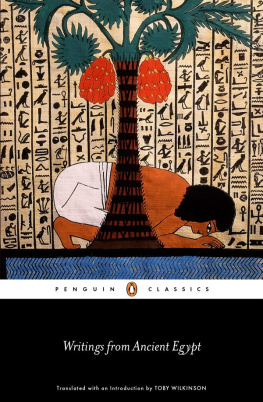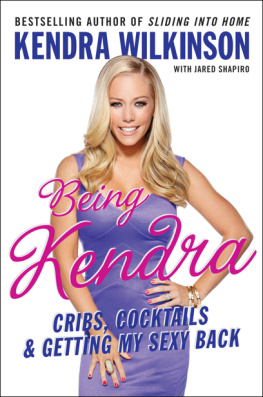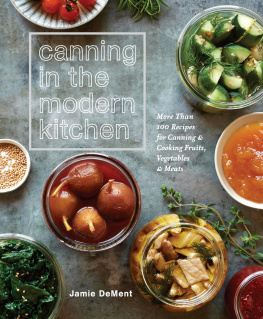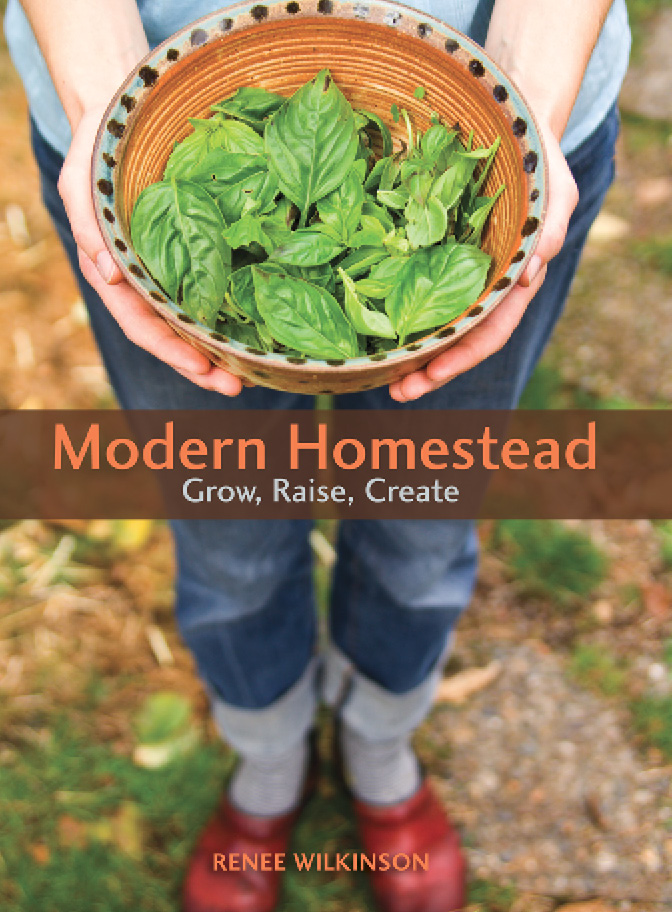For Jaymy love and gratitude until the end of our days
Text 2011 Renee Wilkinson
Images 2011 Isaac Viel, except the following images, Renee Wilkinson: 22, 23, 49, 87, 102, 115, 141, 142, 147, 150, 154, 158
All rights reserved. No part of this book may be reproduced or transmitted in any form or by any means, electronic or mechanical, including photocopying, recording, or by an information storage and retrieval systemexcept by a reviewer, who may quote brief passages in a reviewwithout permission in writing from the publisher.
Library of Congress Cataloging-in-Publication Data
Wilkinson, Renee.
Modern homestead : grow, raise, create / by Renee Wilkinson.
p. cm.
Includes bibliographical references and index.
ISBN 978-1-55591-748-7 (pbk.)
1. Urban gardening. 2. Urban livestock production systems. I. Title.
SB453.W4925 2011
640--dc22
2010044146
Printed in Malaysia
0 9 8 7 6 5 4 3 2 1
Design: Jack Lenzo
Cover image: Isaac Viel
Fulcrum Publishing
4690 Table Mountain Drive, Suite 100
Golden, Colorado 80403
800-992-2908 303-277-1623
www.fulcrumbooks.com
Contents
Chapter One
Chapter Two
Chapter Three
Chapter Four
Conclusion
Acknowledgments
Thank you to Jay, my partner in all things, for answering the question Could I write a book? Your steadfast belief that I could pull this off fueled my determination, and your endless support pushed me further than I could have gone on my own.
Many thanks are extended to Harper Keeler and all the folks at the Urban Farm for their guidance and for providing a welcoming place for me to dig my hands into the soil. Thank you also to Susan Hill Newton at Fulcrum Publishing for asking me if I had ever thought about writing a book. I am grateful for your wisdom and calm. Isaac Viel, you can sure take some beautiful photographs.
How lucky am I to have such lovely friends as Anne Bedney, Denise Hampton, Erika Thompson, Madeline Carroll, Claudia Sims, Rebekah Milani, and Vivan Schoung. Thank you for being such real, empowering women. Laura Irwin, you kept my head from spinning with your sound and seasoned writing advice. Thank you to Patty Stevenson for sharing your community gardening wisdom, and Nate Ulrich for showing off the bees. Deck Family Farm let us come visit their animals so we could have some great pictures of furry and feathered critters.
My grandparents thought they would never see the day when chickens moved back into the city. Thank you for the years of advice and stories that turned my little garden into a thriving homestead.
And finally, thank you to the little ones, Evan, Alex, and Casey. We are trying to clean this planet up for you guys before we leave itsorry for the mess.
Introduction
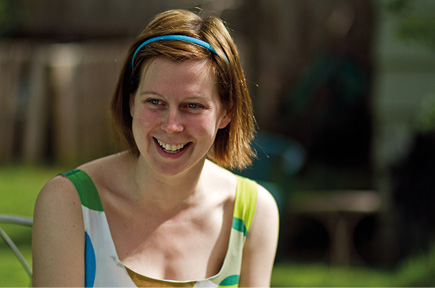
My homesteading life seemed like a new, bold venture when I first picked up a spade as an adult and stood over a barren patch of dirt. I felt nervous, excited, and determined.
My previous life as a renter included small garden experiments with herbs clustered on a windowsill or a few vegetables shoved into some tight spot in a flower bed. Every year of my renting life I moved in the summer, right at harvest season. The indoor plants moved with me, but the outside ones I had grown just in time for new renters to enjoy the fruits of my labor. I didnt realize it at the time, but I actually had a ton of grown-up experience growing vegetablesI was just never there to enjoy them.
My husband, Jay, and I had just taken possession of our first house and were feeling overwhelmed with our lack of knowledge. We didnt know the first thing about home repairs, and our lawn was already in desperate need of mowing. But despite all those worries, I found myself thinking more and more about that big empty canvas of a backyard and mentally staking out my future garden.
Around the time we bought our house, I had been reading lots of books on growing your own vegetables and keeping chickens. I wanted to live more self-sufficiently on our new plot, but I didnt know exactly what to do. I began to sketch out on paper how to transform an endless lawn into a productive, edible landscape. Its one thing to draw on paper, though, and another to actually do it. What if I tore up all the grass, put in fruit trees and shrubs, and the whole thing looked horrible? What if it all died because I didnt do it right?
At the time, I found bafflingly little information online about modern homesteading in the city. So I thought, hey, why not make my own source of informationa garden journal of sorts. This led me to start my blog: Hip Chick Digs. I figured that if the whole thing ended in a big failure, at least others could learn from my mistakes.
It turned out that there really werent major failures. I lost a plant here and there, but for the most part the garden blossomed over the next few years into a lively space humming with bees and ladybugs, ripe with figs and veggies. Meanwhile, the blog became a connection to other urban homesteaders, with people actively commenting on my posts and sharing tips. Yet there was still a much greater resource that I had not discovered: my own homesteading heritage.
I described myself as a newbie gardener, but in fact I grew up on an urban farm. We lived in the city in an old house with a quarter acre of yard my parents devoted to a garden and an orchard. My father woke us up early on summer mornings to weed between rows of corn, harvest raspberries, and collect fallen apples. As a child I would often intentionally forget my house keys as an excuse to spend the rest of my day after school in the garden, playing and stuffing myself with sugar snap peas. My parents would return home to see I had spoiled my dinner and made little progress on my homework.
We had a cellar in the basement where I would be sent every evening before dinner to gather jars of applesauce, peaches, or pickles for dinner. My mothers time spent canning and pickling the fruit and vegetables from our urban garden seemed like a routine that must have been going on in everyones household during the summer and fall months. Surely all of my friends had a freezer in the basement too, filled with meat purchased from the local rancher.
As an adult, I realized how lucky I was to grow up on an urban homestead. I had assumed all of my childhood memories didnt translate to actual gardening knowledge, but it turns out they did.
Standing with a spade in hand at our new house, I already knew some basics. For example, when you water vegetables the water needs to really soak in well, not just get sprinkled on the top. I remembered how tomatoes dont like to get their leaves wet, so my dad would make little moats for the water to pool in for when they got thirsty. I knew the asparagus at our old house would get buggy sometimes, so we needed to pick the bugs off periodically. But other things like onions and potatoes seemed to just grow without us doing much work at all.
I began asking my parents questions about gardening problems and preserving. My mom dug her old canning equipment out of a box in the garage and let me use it to experiment with new recipes as well as my favorites from childhood. When there was a question she couldnt answer, she told me to call (who else?) her mom, Grandma Egger.




